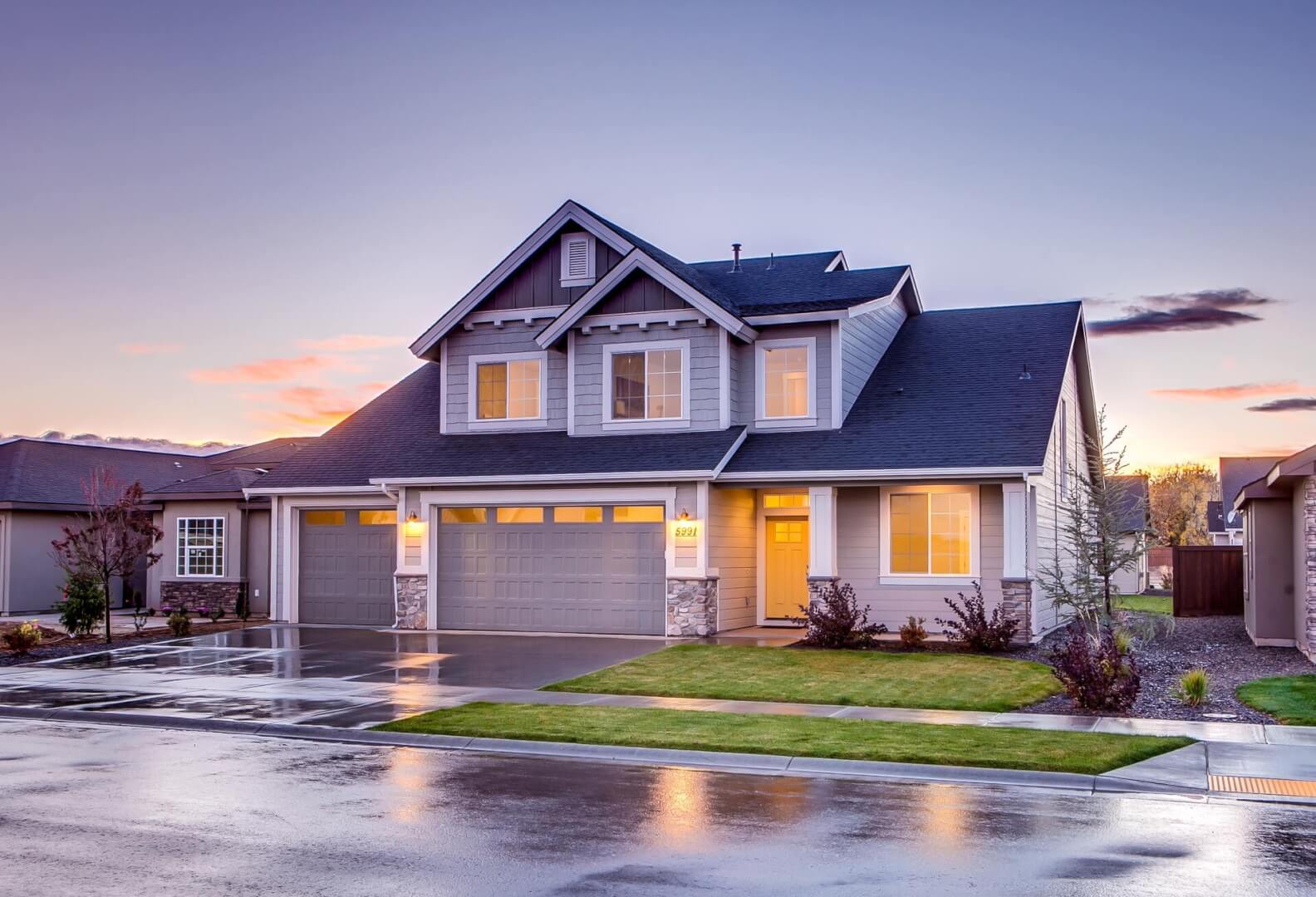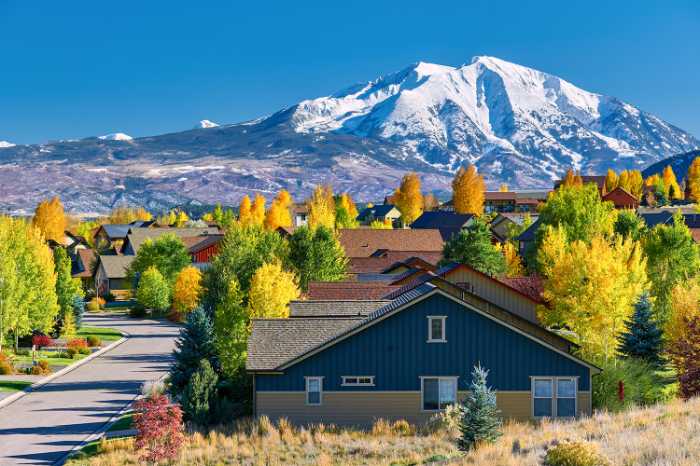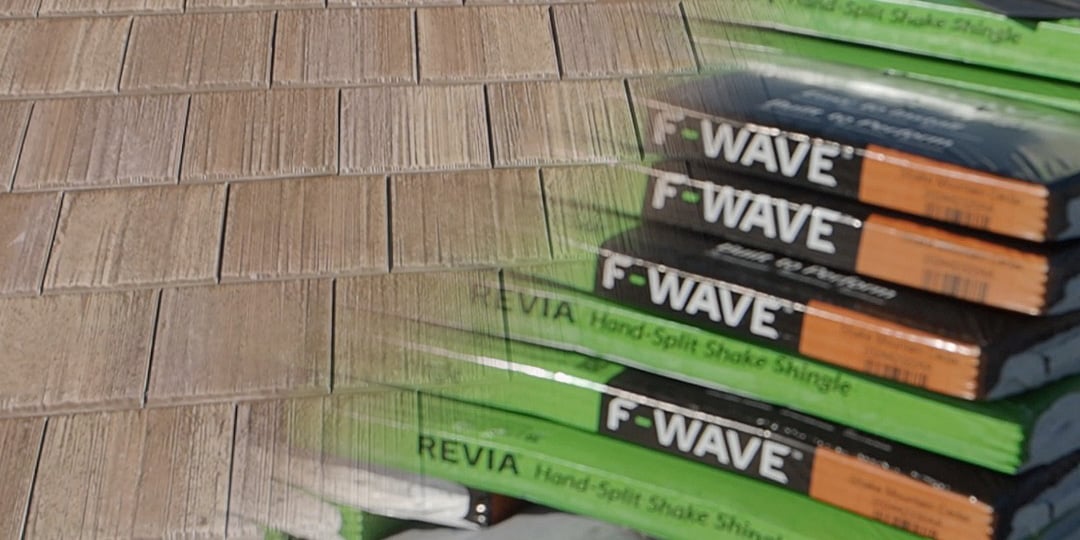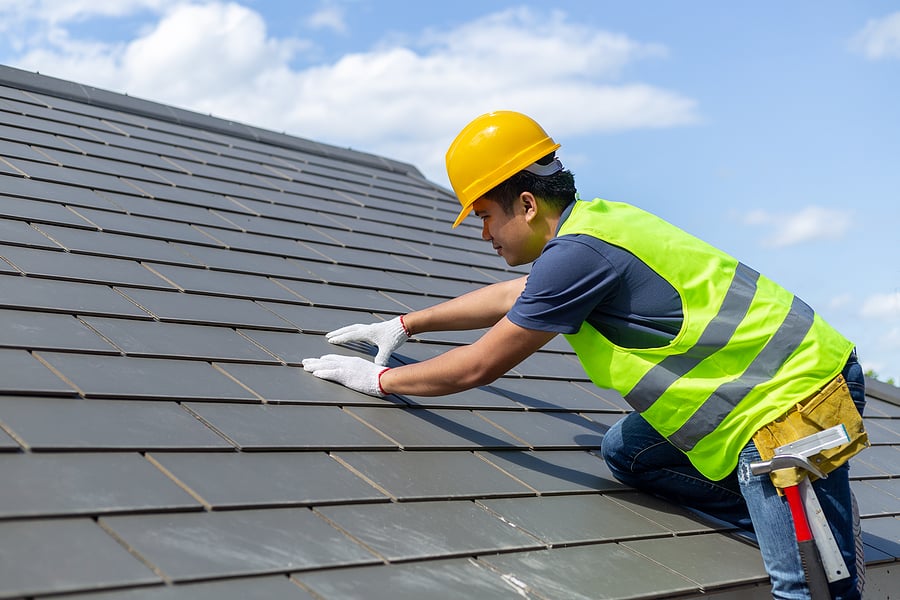Frequently Asked Roofing Questions in Colorado Springs
We've fielded all of the inquiries throughout the years while working on various roofing jobs in Colorado Springs. From asking about roofing frauds to the best roofing material, roof cost, and roof installation. To help you acquire all the information you require concerning your roof, we have compiled the questions and answers that our customers have frequently asked us over the years.
Question 1: If My Bath Exhaust Fan Drips Water, Does That Mean I Have A Leaky Roof?
This video on our YouTube channel has over 58,000 views, so "bath fan and bath exhaust vents issues" are obviously hot topics. We've even had people from other states call us to ask for more information about this. The answer, for the most part, is “No, you probably don't have roof leaks.” Of course, a leaky roof could be causing this, but most of the time when we see this happening, it's because the bath exhaust fan vents directly into the attic. This causes moisture build-up and condensation by the bathroom fan. In the summer, this condensation evaporates because of the attic heat, but when it gets really cold, that's when most people notice the drips coming out of the fan cover. Bathroom exhaust fans should always vent to the outside, not into the attic. If you have a pipe vent and it's dripping, watch this video to see how to properly seal it. Most bathroom exhaust fans are easy to install and only take a few minutes.
What Should You Do?
Have someone check the attic if you observe water dripping from your bathroom exhaust fan. The fan will probably be found to be exhausting into the attic. You'll need to cut a hole in the roof and attach an exhaust cap to the duct pipe in order to extend it so that it vents out of the roof. Additionally, you need to swap out the typical coiled foil ducting for a sheathed version of the duct tubing. If you have an asphalt shingle roof, working with someone who can install the new duct pipe and a roofing contractor who can cut into the roof, install the exhaust cap, and repair the asphalt shingles are both things you should look for. Architectural asphalt shingles will require a different installation process and you'll need to consult with a roofing contractor on the best course of action.
Question 2: Can you roof my house in the winter?
Roofing in the winter is a common topic now more than ever. Numerous roofers are dealing with a slipping production schedule as a result of all the rain, and cold temperatures Colorado Springs and Fountain experienced in August and the first few days of September. Many homes now have to wait until the winter or spring months before their roofs can be replaced. Add that to the enormous number of damaged roofs in this area and the arrival of winter weather. It might make winter roof installation a bit scary when considering roof replacement due to the cold temperatures.
So the big question is, "Can my roof be installed in the winter?" and the answer to that is, "Yes."
Almost the entire year can be spent working with professional roofing contractors in El Paso County because of the mild winters and warm summers. For the shingles to have a chance to seal, there must be sunlight and temperatures of at least 45 degrees, with continued sunny, warm weather for at least a day or two after the roof installation. In some cases, your insurance provider will even cover the cost of "cold weather installation," which entails placing additional sealant on the roof's shingles at the gable ends. If your roof needs to be installed in cold weather, he will request payment from your insurance company for "cold weather installation" because doing so slows down the installers and extends the time it takes to install the roof.
Why Do We Want Warmer Weather To Install Your Roof?
The real simple answer is so that the seal strips on the shingles will warm up enough to get tacky and seal the shingles together so the wind can't separate them and blow them off your roof. When we install asphalt shingles, we put what is called a sealant strip on each shingle as we lay it. That sealant strip needs to be warmed up by the sun so it can become tacky and adhere to the shingle below it. If we install your roof on a cold day, that sealant strip is not going to get tacky and it's going to come off in the wind. A professional roofing contractor will also take into consideration the type of shingles being installed. when installing a new roof, we consider the freezing temperatures because some roofing materials are not meant to be installed in freezing weather.
When you have a shingle roof, the shingles are sealed together with asphalt roofing cement. If you have other questions about replacing your roof in the winter or carrying out a roof inspection, then watch this video for more information.
Question 3: Why Is Your Estimate Higher Than My Insurance Claim Amount?
The roofing contractor's estimate may be greater than the homeowner's estimate in many property damage insurance claims for roofing caused by hailstorms.
Why is that so? There are two basic reasons.
- The adjuster most likely neglected to include some or many items in the scope of service. One thing to keep in mind concerning adjusters is that the vast majority of them lack a background in construction, roofing, or damage repair. They are merely "checking off the boxes" in the form that their claims offices have provided. These templates frequently lack all the components needed to replace your home's roof. An adjuster won't know what to include in his template if he doesn't know how to roof a house.
- The software that your insurance company uses does not have the correct current pricing for this specific local market. This is especially true after a major storm event such as what happened in Fountain and south Colorado Springs on June 13th, July 30th, and again on August 6th.
What Should You Do If Your Insurance Claim Amount Is Too Low?
One thing to keep in mind is that the insurance company's document is likewise an estimate. It is not indelible and not written on stone tablets. Most of the time, if you or your contractor can convince the insurance provider of the necessity of the missing line items, they will include those in the claim (this is called a supplement). However, some insurance providers are adamant about sticking with their predictions. If this is the case, as the homeowner and the policyholder, you should request that your insurance provider show you the language in your policy that specifies that they would not cover the full replacement cost of your damaged property.
You should anticipate that corporation to fully compensate you for your losses if they are unable to. It is preferable to be aware of the scope of your coverage in advance. Do some research on insurance providers, and make sure you know what is and isn't covered by your policy before submitting a claim. Every year, read the annual policy declaration page and, if necessary, ask your insurance agent to explain any terms you don't understand.
Question 4: Why Didn’t My Shingles Last 30 Years Like The Roofer Said?
It is important to know that most shingles have a limited warranty from the manufacturer. That warranty is usually only good for 20 or 25 years.
The warranty may be voided if the shingles are not installed correctly. If the roofer does not put enough nails in the shingles, or if he nails them in the wrong place, the warranty will be void. Also, if there are any defects in the installation of your flashings (the metal around your chimneys, skylights, and vent pipes), that can void the warranty as well.
There's a common misconception that I hear from homeowners all the time about how long they perceive that their shingles should have lasted.
Usually, the question goes something like this; "Why didn't my shingles last 30 years? That's what my roofer told me." Or, "I know I don't need a new roof because I have a 30-year shingle and it's only (few) years old."
There are two basic misconceptions regarding the 30-year, 40-year, or 50-year designations that shingle manufacturers apply to their products. These manufacturer warranties are protections against defective shingles. Roofing warranties are a must-give by the manufacturers.
The first is that these numbers represent how long the shingle will last, when in fact these numbers represent the roof shingle's warranty against manufacturing defects. It carries no implication of how long the shingle will last.
A roof workmanship warranty is a must-have
The second misconception is that the roofing contractor's workmanship warranty will cover any defects in the shingle installation. This is simply not the case. The roofing contractor's warranty only covers defective workmanship and has nothing to do with the defects in the shingle.
The homeowner's misperception is typically the third misconception. The roofing salesman may have mentioned during the sales presentation that the shingles have a 30, 40, or 50-year warranty without clarifying what that implies. When the homeowner hears it, he interprets it as meaning the shingles will endure 30, 40, or 50 years. It's also possible that the salesperson misinformed the homeowner about the warranty's coverage by telling them their shingles would last that long. He was incorrect if he said that.
There should now be no misunderstandings about the 30, or 40-year numerals on your roofing shingles for you or others. Regular inspections are necessary to check for wind damage, etc for necessary repairs. A good contractor or good local roofer should tell you the typical lifespan of your roof, explain what a roofing warranty is, the manufacturer's defects, and other needful things.
The shingle manufacturer's warranty is for the protection of the buyer against defective shingles. The roofing contractor's warranty protects against his defective workmanship.
However, if you have any inquiries, please contact our office.
Question 5: A Bomb Cyclone Just Hit My House! Should I File An Insurance Claim?
On the day of the storm, we were asked this question by a homeowner who has lost a few shingles and the simple rule of thumb should be: If you observe major damage to your property, then don't delay, call your roof damage insurance company.
Major damage to your roof is typically defined as more than a few shingles missing or significant granule loss. If you have major damage, it's likely that your neighbors do too and there will be many claims filed in your area. In the case of minor damages, call a credible contractor to inspect your property and tell you whether or not you have an insurable loss. Homeowner's insurance policies typically have a deductible of $500 or more, so it doesn't make sense to file a claim if your damages are less than that.
What is "major damage?"
Homeowner's insurance cover roof damages. But you should be aware that the homeowner's insurance policy handles only cases of "major damages".
So, the first step is to identify what "major damage" looks like for a roofing system.
Major damage to a roof can be defined as follows:
- granule loss on more than 33% of the roof
- large chunks of asphalt missing from shingles
- major leaks in the roof system
- severe rotting or curling of shingles
If you have any doubts, it is always best to contact a credible contractor to inspect your property and give you an expert opinion. Most times, windstorm or hail damage to a roof is covered under a homeowners insurance policy, so if you have any questions, please give us a call. We would be happy to help.
When should I file a roof damage insurance claim?
After a major storm, it is advisable that you do not wait too long to call your roofing contractor or insurance agent. In most cases, it is best to call within 24-48 hours of severe storms. The sooner you act, the better your chances of getting your roof insurance claim approved.
Why is it important to have a roofing contractor or insurance agent inspect the damage?
One of the most common mistakes homeowners make is assuming that they have major damage when in reality, they only have minor damage. This often happens after a big storm when people see their neighbor's roofs with missing shingles and assume that their roof is just as damaged. If you notice cover roof leaks, don't assume you need new shingles or your insurance coverage should come in. Call for an inspection first.
It is important to have a professional inspect the damage because they will be able to properly assess the extent of the damage and determine if it is major or minor. If the damage is minor, then you probably won't need to file an insurance claim. If you do, you then have a "zero-pay claim" on your record.
If you have any questions about the condition of your roof after the bomb cyclone of March 13, 2019, please contact Homestead Roofing.
Question 6: What Is A Supplement (And Why Should You Care)?
They are not suggesting vitamins if someone from the home repair or insurance industry talks to you about a supplement. The act of asking for an extra to your insurance claim is what they are referring to.
The insurance claim you get for house damage is frequently undervalued. This usually occurs as a result of the necessary scope of work being incomplete. Many things could be lacking for various reasons.
One factor is that insurance adjusters aren't frequently skilled in building or rehabilitation. This implies that they frequently lack knowledge of all the components and information required to complete your repair process properly. They might not have included components that are required by the current codes because they are not aware of the local construction codes. Another reason is that companies want to cut costs. They both save money if an insurance provider and a homeowner agree to a deliberately low insurance estimate. plenty of cash.
One such possible explanation is that "Ordinance and Law" payments are not covered by your coverage. This means that your insurance provider is not required to pay for your new roof to comply with current building rules if your policy does not include Ordinance and Law coverage. If your home was last roofed or constructed before a certain code took effect, for instance, and your contractor now needs to install specific materials or carry out certain tasks in a specific way to comply with the code, you will be responsible for those costs if your insurance policy does not include Ordinance and Law coverage. However, most insurance does provide coverage for Ordinance and Law, which is why a supplement is required.
Question 7: Should I Pull The Permit For My Roofer?
In the counties of El Paso or Teller, a construction permit must be obtained if a homeowner hires a contractor to replace the roof on his home. It should raise some red flags if the contractor asks the homeowner to revoke the permit, but this happens every year after a hailstorm.
What Are The Concerns?
If the roofing contractor you hired is asking you to pull the permit, he probably lacks the necessary county-issued license. Despite having a contractor's license, he might not be able to perform re-roofs with that license. Another possibility is that he once held a roofing license, but it has since expired or been revoked. Or it might imply that he has never had a roofing license in your county and neither has he currently.
We have visited a number of residences where either the owner had the roofer's permit pulled or no permit had been pulled at all. Sometimes, particularly when out-of-state roofers arrive and begin offering work, unlicensed roofers will ask locally licensed roofers to obtain permits on their behalf. This is against the law and will result in the license of the licensed roofer being revoked. A homeowner should always ensure that the contractor he has chosen is qualified to complete the work for which he has been contracted.
Question 8: Should I Give A Roofer Money Up-front?
The Residential Roofing Bill of Rights, commonly known as Colorado SB38, has been discussed extensively here and frequently in the local media. Many people are aware that this regulation forbade roofing contractors from paying, waiving, reducing, or otherwise influencing a homeowner's insurance deductible in exchange for roof repairs or replacements. However, most people are unaware that SB38 also establishes the circumstances under which a roofer may request a deposit payment for a roofing job.
According to SB38, a roofer is allowed to collect a deposit for work to be performed. The amount of the deposit must be reasonable and commensurate with the work to be performed. For example, a roofer collecting a $500 deposit for a job that will cost $5,000 is reasonable. A roofer collecting a $5,000 deposit for the same job would not be reasonable.
What Could Go Wrong If I Give A Roofer Money Up-front?
The most common way that homeowners along the Front Range get scammed by roofers is by giving them a “deposit” payment up-front. Once the roofer has your deposit, you may never see him again. If you do see him again, he may do subpar work or use shoddy materials, knowing that he has already been paid and that you will have a difficult time getting your money back.
The best way to avoid this type of scam is to never pay a roofer a deposit. If a roofer asks for a deposit, find another roofer. There are plenty of reputable roofers in Colorado Springs, like homestead roofing, who will not ask for a deposit.
Colorado SB38 states that, “The roofing contractor shall hold in trust any payment from the property owner until the roofing contractor has delivered roofing materials at the residential property site or has performed a majority of the roofing work on the residential property.”
For your protection, the best course of action is to not give a roofer a deposit payment until he has delivered material to your property. If he complains about this, or says his company requires him to collect money up-front, you can either:
A) Find another roofer, or
B) Ask him to put the payment arrangement in writing.
C) Remind him of Colorado SB38
If he refuses to do either of these things, it is a clear sign that he is not a reputable roofer and you should look elsewhere for your roofing needs.
Question 9: What Is Ice & Water Shield?
Colorado Springs and the surrounding area are experiencing a deep freeze with very cold temperatures and a lot of snow as I write this. ice and water shield is a rubberized asphalt membrane that is used in roofing to protect against water damage. It is applied to the most vulnerable areas of your roof, such as the eaves and valleys, to prevent water from seeping in and causing damage. Ice and water shields are also used around skylights, chimneys, and other penetrations in your roof.
Why Do I Need Ice & Water Shield On My Roof?
If you live in an area with severe weather, like Colorado Springs, an ice and water shield is a necessary part of your roofing system. It provides an extra layer of protection against water damage, which can be costly to repair.
How Do I Know If My Roof Has Ice & Water Shield?
If you are not sure if your roof has an ice and water shield, you can ask your roofer. Most roofers will include ice and water shield as part of their quote, but it is always good to ask to be sure.
You can also inspect your roof yourself to see if there is an ice and water shield installed. Look for a black, tar-like substance around the eaves, valleys, skylights, and other roof penetrations. If you see this, it is likely that your roof has an ice and water shield. Ice dams can form on any roof, but they are much more common on roofs without ice and water shield. Ice and water protector should always be installed on roofs in cold climates.
Ice and water protectors are a necessity in Colorado Springs due to the severe weather we experience. They provide an extra layer of protection against water damage, which can be costly to repair. If you are not sure if your roof has an ice and water shield, you can ask your roofer or look for a black, tar-like substance around the eaves, valleys, skylights, and other roof penetrations.
Wind-driven rain and snow can cause serious damage to your roof if it is not properly protected. Ice and water shield helps to prevent water from seeping in and causing damage. An ice dam is very necessary.
Everywhere there is a chance that water could enter the home through the roof, Ice & Water Shield (IWS) is normally put as an efficient leak barrier for your roof. The places that create the most leaks are places like roof penetrations, side walls, headwalls, valleys, and eaves.
We hope this article was helpful. If you have any questions about ice and water shield or your roof in general, please feel free to reach out to us. We are always happy to help. Thank you for reading!




